The measurement of the delay of streamer start from the top of the electrode is performed to fix the available indexes and in no way affects the provision of different conditions for the onset of the counter discharge. And it is not necessary to increase the voltage of one of the electrodes, it is possible to use a simpler method that involves changing the shape of their peaks. One of them should be given a large radius hemispherical shape, and the other - a cone shape. Fig. 1 shows the result of the method.
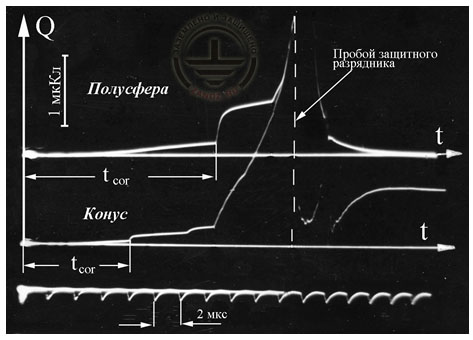
Figure 1. Image of the processes of changing the shape of the vertices of electrodes 1 m high*
The following parameters were taken into account in the tests:
- diameter of the electrode top having a hemispherical shape - 5 cm;
- cone angle of the other electrode - 300 degrees;
- the height of the test object - 1 meter;
- remoteness of conventional electrodes - 1 meter;
- distance from the heads of the involved electrodes to the high-voltage object having a negative polarity - 2 meters.
Counter discharge run time completely coincides with the splash of the space charge to the accuracy of seconds, which was clearly displayed on the obtained oscillograms. About 250 measurements were held per each experiments. In each case, a counter discharge, coming from the top having the shape of a cone, largely advanced the discharge fixed from the head of hemispherical shape. Figure 2 shows the integral lines of data obtained, which confirm the temporal demaraction of the start of each discharge.
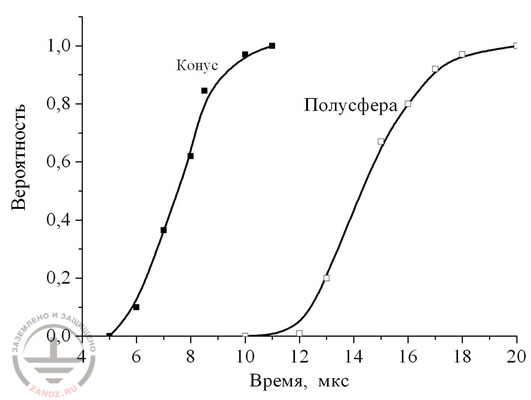
Figure 2. Integral curves for the demarcation of the counter discharge start from the buried electrodes of a height equal to the tops of the charges*
At the same time, counter charge start time does not affect the probability of time intervals breakdown. The results of the researches held showed that the frequency difference of spark strike into different top electrodes is 7%. To determine the efficacy of an active lightning rod, more accurate indexes are required. During the test of the active lightning protection it is required to start fixing spark discharge curves. Similar experiments were carried out by the "Central Research Institute 26" using the high-voltage stand. The conclusion of the study was announced in 2014 at the all-Russian conference. A rod electrode was used and an active lightning rod M-200 were used as the comparison objects. Providing the equal height of the tops, the institution staff kept the pulse voltage of 250/2500 ms with a predetermined amplitude of at least 3.5 MW. Active lightning protection zone was significantly less than that for which it was stated by the manufacturer. Moreover, the scientists have found out that a conventional electrode is capable of accepting 20-30% spark discharges more than the active. Both objects were subjected to an absolutely similar impact. These results have been repeatedly verified, which indicates their complete authenticity.
It is equally important that in 2003 the staff of the New Mexico Institute announced similar results. In the context of the field experiment, they observed the conventional rod electrodes and a group of ESE-lightning arresters, the height of which was equivalent. Despite the claimed characteristics, ESE-lightning rods turned out to be more resistant to lightning strikes, than the conventional electrodes. Representatives of the companies - manufacturers could not explain, let alone admit, that controlled exposure causes a completely opposite result. However, there are certain reasons for this effect.
The main constraint to study the efficiency of active lightning protection, is the policy of manufacturers of ESE lightning-rods. They do not disclose the electrical parameters of the impacts, that is, those parameters which control the voltage pulse. Basically, these are temporary characteristics. The research topic would be less relevant if they did not hide the indexes mentioned above. Any skilled technician will easily determine the time parameters, since the sizes of the overvoltage capacitors and the active lightning rods are published and available. They can be found in the relevant catalogs and reference materials. Having compared these figures, the researchers will come to the conclusion, indicating the minimum power capacity of the internal control voltage sources.
The duration of the control voltage pulse can be measured in microseconds only if the leading pulse consumes 1 ampere of current in the initial segment. The eesults of the pulse impact were obtained in the frames of the laboratory tests more than 50 years ago. Figure 3 graphically displays indexes, fixed in the course of the increase of the spark duration between plane-rod on the surface 5 m long.
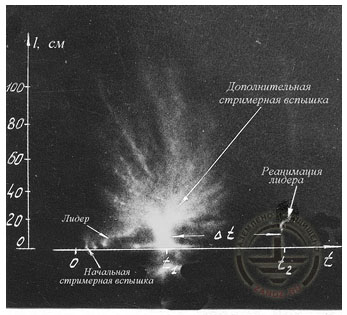
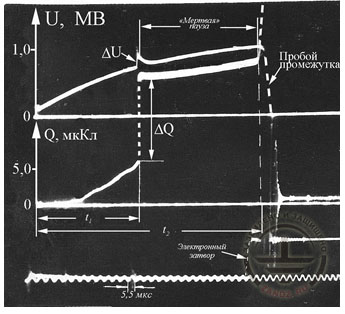
Figure 3. The impact of short pulse affect on the development of spark discharge*
During the experiment, on a flat metal surface the specialists fixed a three-meter rod and provided grounding to it. The gap between the discharges reached two meters. The upper surface was subjected to an increased impulse voltage (not less than 200 μs) and a short control pulse. To fix the optical depiction it was necessary to use an electronic optical converter, amplifying the light. It is able to regularly rotate the resulting images, and thanks to the electric shutter, it was possible to cut off the bright pre-breakdown stage. With the help of the oscilloscope beams, the detection of the triggering moment was carried out.
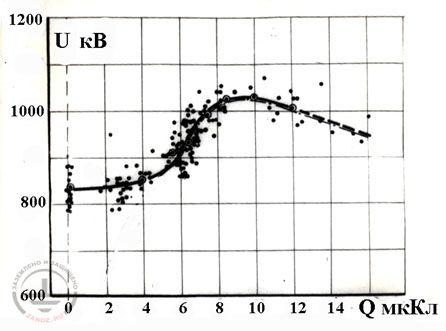
Figure 4. The ratio of the discharge voltage to the charge value of the streamer flash obtained by the control pulse*
* - illustrations are taken from the article of prof. E.M. Bazelyan "Are active lightning rods active?"
See also:
- Active lightning receivers
- Wooden house lightning protection
- Advices on the selection, design and assembly of grounding and lightning protection systems
Related Articles:
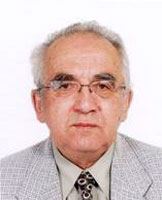 Lightning protection of residential and public buildings - answers to frequently asked questions in the design
Lightning protection of residential and public buildings - answers to frequently asked questions in the design
 Lightning Protection of Large Territories: Parks, Grounds, Plant Territories. Page 1
Lightning Protection of Large Territories: Parks, Grounds, Plant Territories. Page 1
 Lightning Protection of Large Territories: Parks, Grounds, Plant Territories. Page 2
Lightning Protection of Large Territories: Parks, Grounds, Plant Territories. Page 2
 Lightning Protection of Large Territories: Parks, Grounds, Plant Territories. Page 3
Lightning Protection of Large Territories: Parks, Grounds, Plant Territories. Page 3

